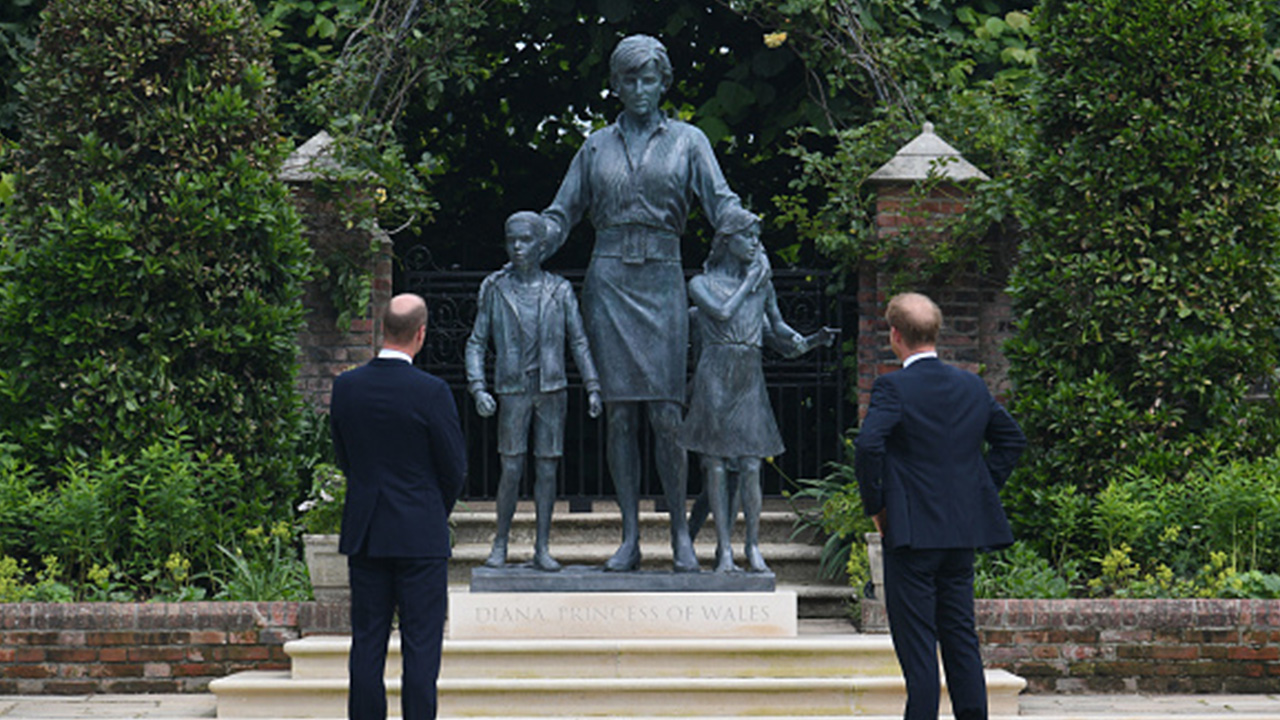Princess Diana's final hours: A timeline of one tragic night in Paris
An elegant dinner at the Ritz in Paris. A post-midnight drive past the city's floodlit treasures. And then, tragedy. The story of Princess Diana's death at age 36 in that catastrophic crash in a Paris traffic tunnel continues to shock, even after a quarter-century.
Twenty-five years later, The Associated Press is making available this account of Diana's final hours in the French capital, published on Sept. 5, 1997, a few days after the Aug. 31 crash. (The account, based on reporting, interviews and news reports available at the time, has been trimmed and edited lightly.)
___
Entering the Pont de l’Alma traffic tunnel at night, one of the last things you see is the floodlit Eiffel Tower.
Its iron latticework shimmering like lace against a black sky, it likely was one of the last things Princess Diana ever saw.
The tower’s lights go off every night at 1 a.m. By that time on Sunday, Aug. 31, a dying Diana lay trapped in a crumpled wreck of a Mercedes, with rescuers trying frantically to treat her while they cut through the metal roof.
The short ride to the tunnel from the Ritz Hotel had been a stunning one, with a view of the city’s other floodlit treasures: the obelisk at the Place de la Concorde, the Arc de Triomphe off to the right, the gold-domed Hotel des Invalides across the river to the left.
Four people were in the car: a driver and a bodyguard in front, the princess and her boyfriend in back. Behind them — it isn’t clear how far — were several motorcycles and perhaps two cars bearing paparazzi.
Approaching the tunnel along the Seine River, the shining tower was just to the left. Even through the tinted windows of a luxury car, it would’ve been hard not to look.
Seconds later, there was a huge crash — witnesses said it was like an explosion. It would soon reverberate around the world, but for a few minutes in the still night, there was only the insistent blare of a car horn set off by the driver’s slumped body, and then the clicking of camera shutters.
For the princess, after the spectacular city lights, there was only blackness.
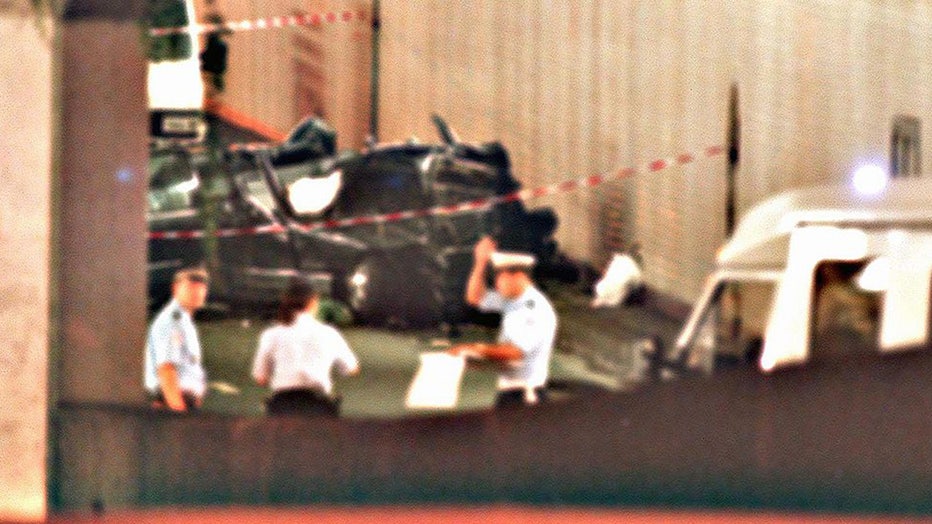
FILE - The wreckage of Princess Diana's car lies in a Paris tunnel Aug. 31. (JACK GUEZ/AFP via Getty Images)
___
10 p.m.: The evening begins for Diana and Dodi Fayed with dinner in the sitting room of the Imperial Suite at the Ritz. It is the best suite in the hotel, and no wonder: The hotel is owned by Fayed's father, Mohamed Al Fayed.
The food comes from the hotel’s two-star restaurant, Espadon, which means swordfish. It’s known for its 100,000-bottle wine cellar.
Diana is reported to have ordered an appetizer of mushrooms and asparagus, and then sole; for Dodi, turbot.
Dodi may have carried a surprise in his pocket: News reports quote a Paris jeweler saying he'd sold him an "extraordinary" diamond solitaire ring for $205,000, and it is at the Ritz that Dodi may have given it to Diana.
Is it an engagement ring? No one will ever know for sure.
But the day has been tense. The couple has been having problems with paparazzi ever since their mid-afternoon arrival in Paris. First, they trailed Diana and Dodi from Le Bourget Airport outside Paris, on their way to see Villa Windsor — a mansion that once housed the Duke and Duchess of Windsor and that Dodi’s father has bought and renovated. Their driver managed to shake the photographers.
Then, an attempt to have a 9:30 p.m. dinner at the chic Paris bistro Chez Benoit failed, when paparazzi again picked up the trail. Giving up, Diana and Dodi decide to dine at the Ritz, where there is better security.
Hotel video shows the cars arriving back at the Ritz, flashes going off as Diana goes through a revolving door, eyes downcast, looking distressed.
They walk down the Ritz’s blue carpet bordered in gold toward the restaurant. Ten minutes later, they walk back down the hallway — "because of the attention in the restaurant," Paul Handley-Greaves, head of Al Fayed’s security team, says later in London — and head up a spiral staircase to the Imperial Suite.
Inside, the plush hotel, with rust-colored marble columns and floors covered with Persian rugs, is calm and peaceful. But outside the entrance, on the elegant Place Vendome, paparazzi have again gathered.
___
10:08 p.m.: Henri Paul, the No. 2 security man at the Ritz, arrives at the hotel after having been summoned on his cell phone at 10 p.m. He parks his own car outside, chats with some people and shakes hands with a friend, the night duty manager and the concierge. Their accounts, Handley-Greaves says, "are that he was sober, he didn’t smell of alcohol, his gait was steady."
Paul spends the next two hours in the lobby area. At one point, he goes into the hotel bar and sits with two other security people at a table on the edge of the bar area. There is no security camera in the bar, but both Handley-Greaves and Michael Cole, an Al Fayed family spokesman, said interviews with hotel personnel showed no evidence that Paul was drinking.
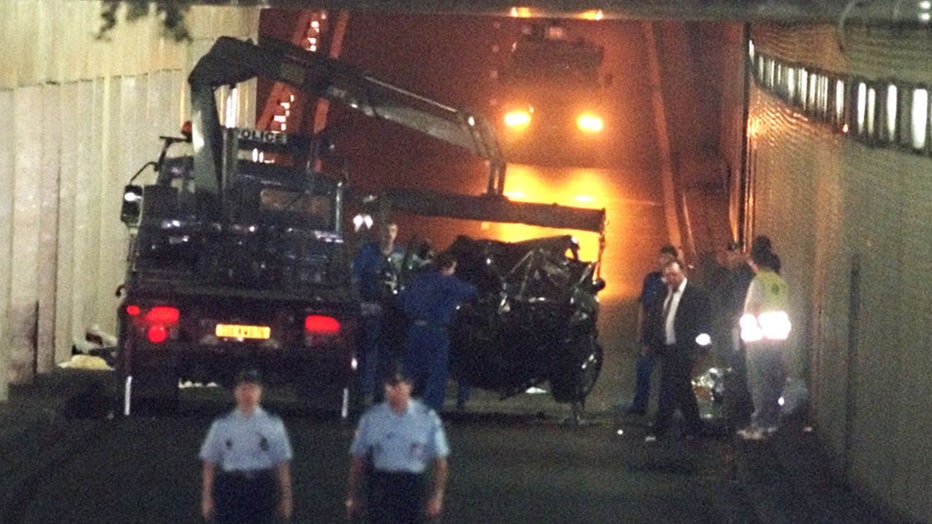
FILE - File photo dated August 31, 1997, shows wreckage of Princess Diana's car in the Alma Tunnel of Paris. Britain's Princess Diana, her friend Dodi Fayez and the driver Henri Paul were all killed in the crash. (PIERRE BOUSSEL/AFP via Getty Images)
___
12:07 a.m.: After dinner, as they leave the Imperial Suite, Diana and Fayed stop to discuss the paparazzi "and the concern that the princess had that something would happen," Handley-Greaves says. "Earlier on in the day," he tells a London news conference, "she had expressed concern to bodyguard Trevor Rees-Jones at the foolhardiness of the motorcycle riders, not for the safety of the vehicle she was traveling in. She expressed concern that the erratic manner in which they were driving might result in one of them falling under the wheels either of the lead car or the backup."
Diana and Fayed are headed to an apartment he owns off the Champs-Elysees, just near the Arc de Triomphe. Knowing paparazzi are outside, they’ve decided to use two decoy vehicles — Range Rover and a Mercedes. They post the Range Rover outside the Ritz’s main entrance, with Fayed's regular driver at the wheel.
They need a third car, so a rented Mercedes is called into service. The jet-black car, rented from the Etoile limousine company, is known for its silky-smooth ride, but because of its weight, it isn’t the best car for weaving in and out of traffic. "This isn’t the kind of car you do slalom in," says Jean-Pierre Bretton, a limousine driver who often picks up well-heeled clients at the Ritz.
Diana and Dodi need a driver, too, and that’s why Paul has been called back in from home. Paul, 41, a native of France’s Brittany region, is reported to have received special training in Germany to drive the armored Mercedes. Police say Paul lacked the special license to drive the car; the Al Fayed family denies it.
Paris prosecutors say autopsy blood tests showed Paul was legally drunk, and judicial sources, speaking on condition of anonymity, put the blood-alcohol level at more than three times the legal limit, at least.
Despite reports that Paul was a heavy drinker, at least two bartenders who knew him told The Associated Press they never saw signs of that.
Tony Poer, a former bartender at Willi’s wine bar near the Ritz, says Paul was a regular there, but only drank beer.
"I never saw him extremely drunk," says Poer, now manager of a San Francisco nightclub. "He even gave me a ride home a few times. I wasn’t worried or anything."
And Alain Bousseau, owner of the Mazarin bar not far from the Ritz, says that although Paul was reported to be a regular there, he saw him only two or three times in the last few years. Once, he drank only a small glass of Cheverny wine; another time, he had a coffee.
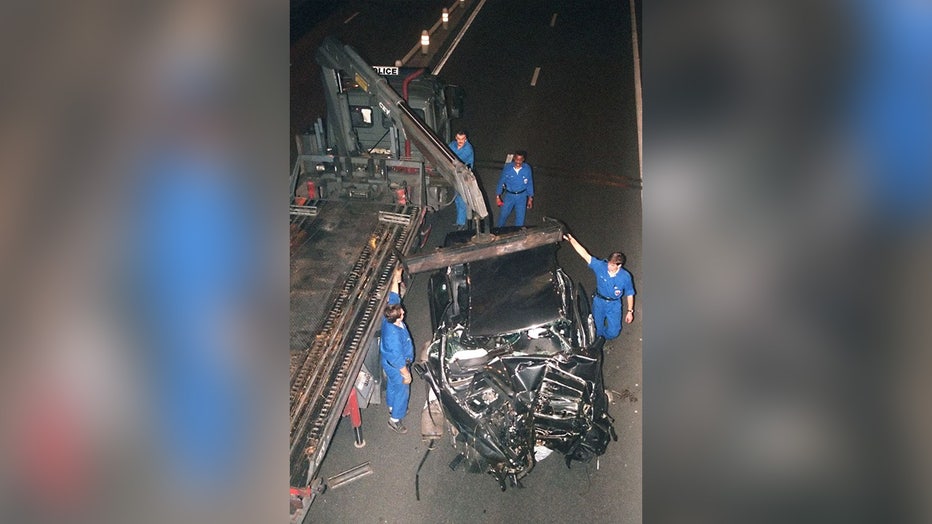
FILE- File photo dated August 31, 1997 shows the wreckage of Princess Diana's car in the Alma tunnel of Paris. (PIERRE BOUSSEL/AFP via Getty Images)
___
12:19 a.m: Dodi and Diana stand in an area by the back entrance of the hotel, milling with security officers preparing their departure. A Ritz Hotel security camera video shows Dodi slipping his arm protectively around Diana’s waist.
___
12:20 a.m.: The couple leaves the Ritz from the back entrance, and climbs into the Mercedes. Diana is dressed in a black top, black jacket and belted white trousers. Her hair is carefully coiffed and she wears red lipstick.
Dodi looks more casual in a tan jacket and long gray shirt, open at the neck and hanging loosely over stone-washed jeans.
The hotel video shows no paparazzi outside the back entrance, but the decoy ruse clearly hasn’t worked.
With paparazzi in pursuit, the Mercedes travels down the Rue Cambon and turns right onto the colonnaded, boutique-lined Rue de Rivoli, with the Tuileries Gardens on the left. Arriving at the Place de la Concorde, it takes a left past the obelisk, allowing a view of the Champs-Elysees and the Arc de Triomphe on the right as it makes its way to the bank of the Seine.
Here, some photographers say, Paul already is driving dangerously. Jacques Langevin says he was told by fellow photographers that at the Place de la Concorde, when they were stopped at a red light, the Mercedes took off with a roar before the light turned green.
Already, the photographer told the Liberation daily, "the Mercedes was fishtailing dangerously and the driver didn’t seem to be in control."
Neither Diana nor Fayed are wearing seat belts; only bodyguard Rees-Jones, sitting in the front passenger seat, is wearing one.
The Mercedes is heading along the river now, down the Cours de la Reine, then the Cours Albert 1st, where the approach to the tunnel lies.
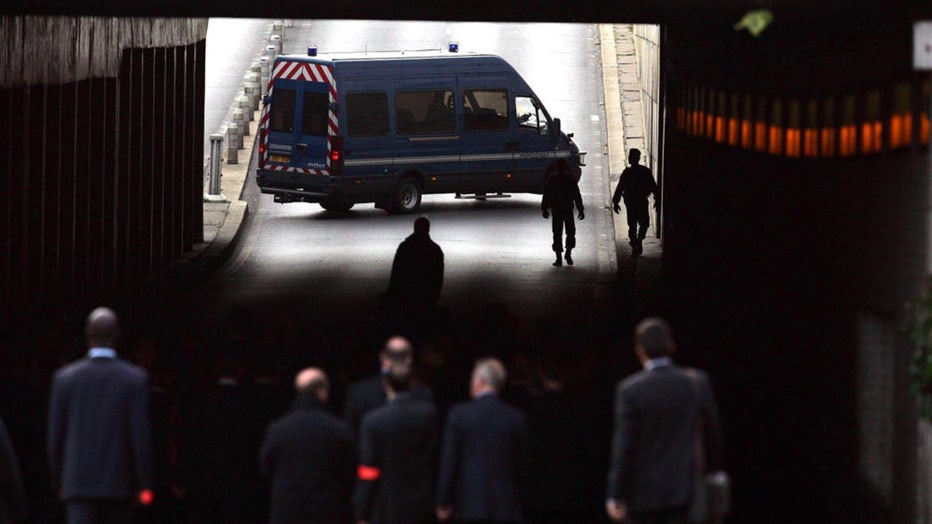
FILE - The jury from the Coroner's inquest into the deaths of Diana, Princess of Wales and Dodi Al Fayed enter the Pont de l'Alma tunnel in Paris where the Mercedes the couple were travelling in crashed. (Cathal McNaughton - PA Images/PA Images via Getty Images)
__
About 12:25 a.m.: The Mercedes enters the 660-foot-long tunnel, probably to avoid traffic on the crowded Place de l’Alma. The tunnel is brightly lit, neon bulbs reflecting on the white-tiled walls.
The approach is dangerous at high speed. The road swerves slightly to the right, then to the left; then there is a quick dip.
The speed limit is 30 mph. A cab driver says he once tried the tunnel at 70 mph and was scared. "That thing is narrow and dangerous," said Jacques Gaulthier. "You’d have to be crazy to take it fast."
Just how fast does Paul take it?
Police officials, speaking on condition of anonymity, say the car’s speedometer was found frozen at 196 kilometers per hour, or 121 mph. They call it an almost certain indicator of its speed at impact, but the Al Fayed family disputes that, saying the speedometer was stuck instead at zero. A Mercedes expert says the speedometer moves automatically to 0 or to top speed when power cuts off.
Witnesses also have described the car as going well over 90 mph, perhaps close to 120 mph.
Also, police say the car, equipped with anti-lock brakes, left 53 feet of skid marks — another indication of high speed.
It isn’t clear how many paparazzi are tailing the car, and at what distance. A lawyer for Al Fayed says a "cortege" of paparazzi were "swarming" the car. But one photographer, Lazlo Veres, says they were at least 550 yards behind.
Seconds after the car enters the tunnel in the left westbound lane, it goes out of control, striking the 13th concrete pillar dividing the tunnel, rolls over and rebounds into the right wall. It then spins around. When the car stops, it is facing east — the direction it came from.
The driver’s body is slumped over the horn. The impact is so great that parts of the radiator are reportedly found embedded in his body. Fayed, behind him on the left side of the car, also is killed immediately.
Jack and Robin Firestone, tourists from Long Island in New York, are walking near the tunnel when they hear the awful noise. They run in. In interviews, they, too, describe photographers "swarming" the wreck.
Yet a doctor who says he was driving through the tunnel in the other direction just after the accident, arriving before rescuers did, says he wasn’t hindered by the photographers.
Dr. Frederic Mailliez says Diana "was unconscious, moaning and gesturing in every direction" as she fought for breath.
"There were 10 or 15 photographers around, and they were snapping photos nonstop, but I cannot say they hindered my work," he says.
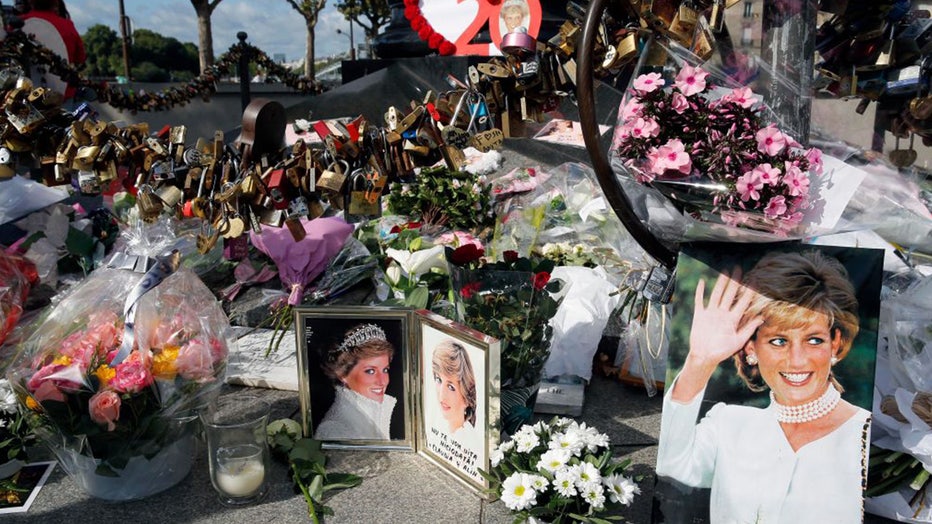
FILE - Iconic photos, flowers and messages dedicated to pay homage to Lady Diana to the 20th anniversary of her death adorn the plinth of the Flame of Liberty statue on August 31, 2017, in Paris, France. (Thierry Chesnot/Getty Images)
___
12:27 a.m.: Firefighters get the first call for help.
___
About 12:40 a.m.: Police and firefighters arrive. Diana and bodyguard Rees-Jones are still alive. The car is a crumpled mass of metal and glass.
Police arrest six photographers and one motorcyclist, confiscating their film and cellular phones.
Rescuers need to cut through the roof of the car to get the victims out. They finally extract Diana through the back. Meanwhile, emergency doctors have been trying to treat her at the scene.

FILE - The Prince of Wales with Princes William and Harry looking at floral tributes left at Kensington Palace following the death of Diana, Princess of Wales in September, 1997. (Anwar Hussein/WireImage)
___
2 a.m.: Diana is bleeding heavily from the chest when she arrives at Hospital La Pitié Salpêtrière, along with the bodyguard. She quickly goes into cardiac arrest.
Doctors close a wound to the left pulmonary vein, then try to revive her with two hours of chest massage — first externally and then directly to the heart. It fails.
___
4 a.m.: Diana is declared dead.
___
6 a.m.: "The death of the Princess of Wales," says British ambassador Michael Jay, with doctors at a hospital news conference, "fills us all with shock and deep grief."


